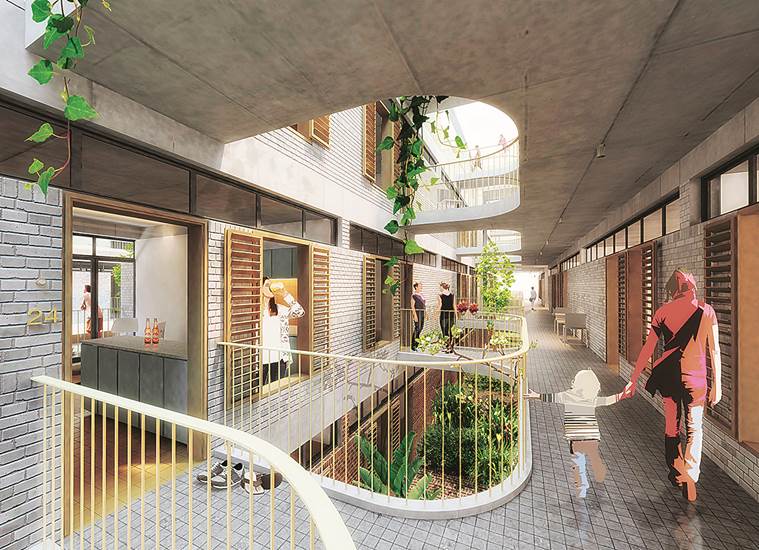Where the Hearth is
Like all developing cities around the world, Cambodia’s capital is no stranger to unregulated growth. With rapid urbanisation comes chaos and poor planning, and Special Economic Zones are often found to exclude people in their plans.

Utility courtyard highlighting the hierarchy of space, ‘Home Within House’.
Mumbai design studio atArchitecture is the winner of the Building Trust International’s Affordable Housing Design Challenge 2018. A non-profit organisation, the trust that looks at design solutions for urban issues took up Phnom Penh as a site for intervention. Like all developing cities around the world, Cambodia’s capital is no stranger to unregulated growth. With rapid urbanisation comes chaos and poor planning, and Special Economic Zones are often found to exclude people in their plans.
This competition, backed by the United Nations Development Programme (UNDP) and the Phnom Penh Special Economic Zone (PPSEZ), hoped to enhance the quality of life for its local residents and the surrounding communities. It involved designing a 3,000-unit affordable housing development in Phnom Penh for factory workers in the SEZ. The winning project will be a model for similar low-income housing initiatives in other Cambodian cities. There were nearly 3,000 entries from architects, students and designers from around the world.
For Mumbai-based architects Avneesh Tiwari and Neha Rane, their entry ‘Home Within House’ stood out for “its originality of design and creative solutions which were derived from our philosophy of finding an optimum balance between intuitive thinking and rational approach,” says Tiwari.
As a six-year-old firm, atArchitecture won the LafargeHolcim Awards Gold 2017 for Asia Pacific, for a community centre and shelter project in Thane for abandoned children of sex workers. This year, they were one of the finalists for an alternative layout design in standard housing for a competition organised by the Russian Ministry of Construction Industry. Within the limited format of the Cambodia project, they fused kitchen gardens, community spaces and recreational grounds with the housing blocks to make it an integral part of each cluster. Sensitive to the orientation and local climate, they also integrated the adjoining river as a public amenity.
Working with a composite of local clay bricks and concrete, and creating courtyards and windows, they ensured that ample light and ventilation entered homes, and that the project is cost effective and energy efficient. “Our project is also space-efficient. For instance, the corridor leading to the apartments is shared as a veranda overlooking the open-to-sky courtyards. On the other side, the boxing for recessed windows are shared as a storage cabinet. The design is also adaptable to other similar sites because of its modular system and simplicity of planning. The units are designed with no permanent partitions, allowing for flexibility and efficiency of interior space as well,” says Tiwari.
In the coming months, Building Trust International will work with UNDP, PPSEZ, and local partners to bring the design live on the ground.






















No hay comentarios:
Publicar un comentario